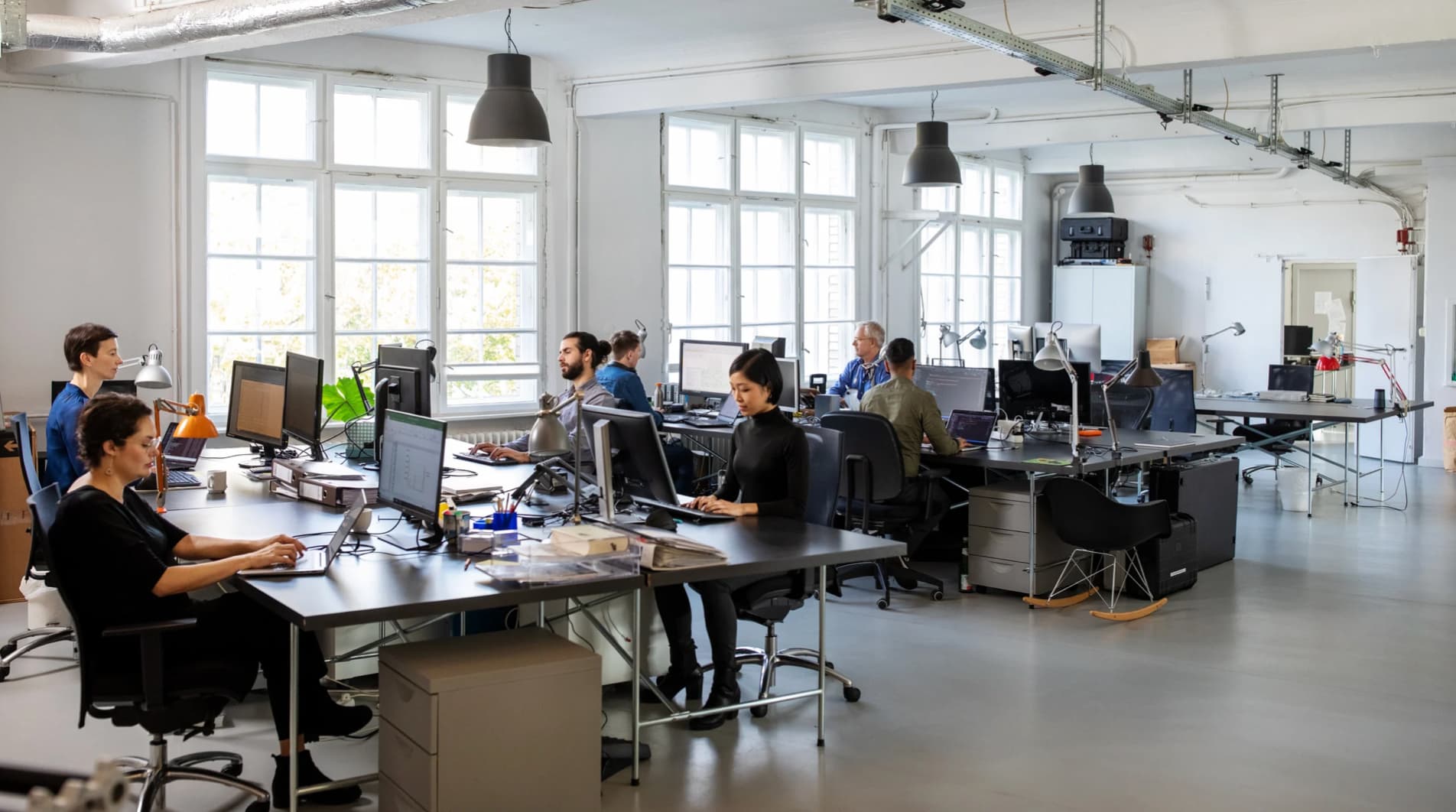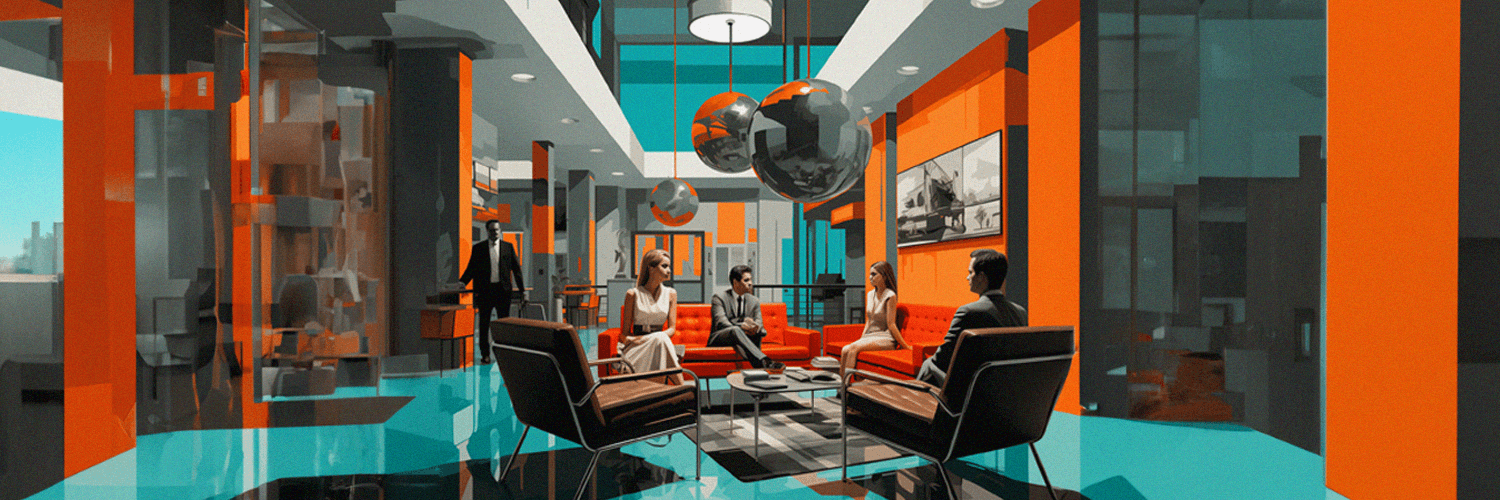Research shows that in 2025, nearly two thirds of organizations looking to change their attendance policies to require more in-office days expect employees to be in the office three or more days per week. But encouraging office attendance requires more than rules and requirements these days.
Hybrid work has changed the way employees come into the office. They want to know if they’ll get the space, team and support they expect when they get there before they decide whether to show up or work remotely. Every day, employees ask themselves:
- Who else will be there?
- Is there room for me?
- Will it be worth it?
When workplace tools fail to answer these questions, attendance drops, culture weakens, and productivity takes a hit. No wonder booking systems have become essential to the success of hybrid work, then.
TL;DR:
- Booking systems increase attendance in the office by giving employees a real-time overview of room availability, team attendance and collaboration opportunities.
- Poor or outdated workplace tech creates friction, leading to ghost desks, low trust and inconsistent in-office experiences.
- Data from booking tools helps optimize space utilization, team coordination and workplace strategy – making the office worth the commute.
How Poor Workplace Management Tech Push People Away from the Office
Companies cite productivity (86%), improving company culture (71%) and employee well-being (57%) as reasons for enforcing return to the office mandates. But policies, mandates and enforcement are only half the battle.

Without the right support systems, employees encounter friction, confusion, and frustration — making it all the more tempting to stay home. Here’s why this happens:
Lack of Visibility = Uncertain Attendance Decisions
One of the biggest hurdles hybrid employees face is a lack of visibility. If they can’t easily check desk availability or see who else will be in the office, the decision to commute starts to feel like a gamble. Why show up only to not find a desk or be forced to sit far away from their team? Attendance then steadily decreases, as many choose the remote option.
At one organization, a seemingly minor tech issue snowballed into a major source of dissatisfaction: the booking system was only updated every 24 hours. This delay meant that employees could not rely on the availability displayed. People arrived to work only to find that all the good spots were already taken, if there were any left at all.
At another company, the issue was a complete absence of real-time floor plans and information about who else planned to be in. Employees had no way of knowing if their teammates would be present or where they would be sitting, so spontaneous collaboration felt like wishful thinking. As the novelty of hybrid work wore off, so did the patience to navigate these blind spots.
Without a clear picture of what working in the office would look like on any given day, most employees simply chose to work remotely. Because visibility is more than a nice-to-have – it’s a decision driver.
Lack of Data = Missed Opportunities to Improve Attendance
Data, or the lack of it, also plays an important role. Leaders need accurate insights into space utilization to refine office layouts, adjust hybrid policies and understand why employees come in.
However, badge-in data only tells part of the story. It doesn't differentiate between who booked a space and who actually used it, nor does it show which areas are over or under-utilized. Without these insights, companies are missing out on crucial opportunities to improve the workplace experience. It also can’t distinguish between areas buzzing with activity and those that consistently go unused.
In one case, a workplace manager shared their struggle to make sense of office usage. They had recently reconfigured several areas and found that attendance had not improved. Without real booking and usage data, it was impossible to determine whether the problem was layout, team distribution or timing.
The clearer the data is, the easier it is to make meaningful changes: adjusting layouts to reflect how teams collaborate, refining policies to match attendance patterns, or scheduling in-office events on days when employees are most likely to be in. In short, better data leads to better decisions, and better decisions lead to better attendance.
Lack of a Booking Solution = Friction & Confusion
Companies that rely on manual booking systems are more prone to errors and inefficiencies, such as double bookings or ghost reservations. What's more, without a centralized platform for booking desks or meeting rooms, employees are often more hesitant to show up. They don't know if they'll get a seat or be able to sit with their team, so there's always friction.
One company recounted the early days of the hybrid days, when room bookings were managed through a patchwork of email threads, Slack messages and shared spreadsheets. What began as a stopgap solution quickly turned into chaos. Desks were double-booked, meetings were missed due to room conflicts, and employees wasted time and energy trying to secure a seat. Frustration set in and attendance started to slip. When booking a desk felt like a chore, many decided it wasn’t worth the effort.
Plus, employees had no way of knowing where their colleagues would be sitting. Many sat at the opposite end of the room to their team, making collaboration awkward or impossible. This lack of clarity made it nearly impossible to coordinate meaningful collaboration. People came in with good intentions, but left disappointed after spending the day alone or disconnected from their team.
Without a reliable system in place, even the most enthusiastic employees begin to hesitate. And when coming in feels like a gamble, it’s all too easy to default to remote work.

How Booking Systems Improve Office Attendance
While hybrid policies and leadership support set the foundation, they need to be backed by the right tools. That’s why 66% of workplace leaders have prioritized new workplace technology investments to boost office attendance.
Real-Time Availability Answers “Is There Space for Me?”
Even the best-crafted hybrid policies can fall flat without practical support. That’s why workplace leaders are turning to smart booking systems – tools that remove uncertainty and empower employees to make confident, informed decisions about commuting.
One of the most important questions people ask themselves before heading in is simple: will there be a seat for me?
Modern booking platforms answer this question in real time. Employees can check the availability of desks, meeting rooms and collaborative areas from anywhere, whether they’re on a train, in a café or planning their week from home. These tools take the guesswork out of the equation.
Instead of risking a wasted commute or scrambling to find a workspace, employees come into the office knowing exactly what’s available and where they need to go. This clarity transforms attendance into a more intentional choice and contributes to a smoother start to the working day.
Live Updates Prevent Overbooking and No-Shows
Outdated systems lead to one of the most frustrating workplace issues: ghost desks. These are spaces that appear reserved in the system but remain empty throughout the day, making the office feel quieter than it actually is. They also lead to bottlenecks when space seems scarce, even when it's not.
Smart booking tools, especially those with real-time syncing across platforms, close this gap. If someone cancels a reservation or changes desks, the system is updated immediately, reducing the risk of double bookings or inaccurate occupancy data.
This responsiveness ensures that employees find the busy, collaborative atmosphere they expected, not a half-empty floor that leaves them wondering why they came in the first place.
The result is a more honest and efficient use of space. By reflecting changes as they happen, the system ensures that attendance matches availability and stops small hiccups from becoming big frustrations.
Employees Can See Who’s Coming In – And When
Space isn’t the only reason people come in. Booking platforms that allow employees to see their colleagues’ schedules remove another barrier to attendance: uncertainty around collaboration. When someone sees that their manager or close colleagues will be there, it’s easier to feel part of the team.
The data backs this up: a large-scale study of around 43,000 employees at a global technology company found that face-to-face attendance increased by 29% when managers were present and by 16% when more teammates came in.
The message was clear: visibility into other's schedules creates a pull and in this way the planning of a week becomes a social and strategic event.
It encourages coordination of schedules without the hassle of emails or never-ending Slack threads. When it’s easy to see who’s around, it’s easier to say, “I’ll be there too."
Team Zones and Neighborhoods Reinforce Group Presence
Some companies go one step further by introducing team-based office layouts. These “neighborhoods” create unified zones for specific teams and provide employees with the comfort of familiarity and the energy of a shared mission. However, maintaining this structure is not easy without the right tools.
Booking systems help to manage these zones effortlessly. They ensure that teams have access to their designated areas and can book a space close to one another, encouraging focused collaboration and greater cohesion in the office.
Rather than randomly sitting wherever there's an empty seat, employees are more likely to return if they feel the environment is intentional.
Neighborhoods also strengthen culture. When people know where their team usually sits and that others will be nearby, it reinforces a sense of presence and common purpose. Booking platforms serve as the glue that holds these micro-communities together day after day.
%20(1).png?width=3024&height=1710&name=calendar%20view-work%20statuses%20(1)%20(1).png)
Data on Booking Patterns Drives Better Space Strategy
What’s happening in the office – who’s coming in, where they sit, how often – holds immense value for workplace strategy. With the right tools, leaders don’t have to guess; booking data offers clarity.
These insights help teams understand peak days, popular zones and underutilized areas. Managers can see if a department prefers the middle of the week or if a certain floor is consistently avoided. Instead of making decisions based on assumptions or incomplete badge-in data, they can act on real usage patterns.
This transparency allows for more flexible decisions. Perhaps a little-used wing can be converted into a quiet focus area. Maybe certain teams need to be moved based on attendance trends. Either way, a robust booking system makes everything visible, and makes office planning proactive, not reactive.
Personalization Features Make the Experience Feel Worthwhile
The best booking systems don’t just manage the logistics, they also shape the employee experience. Through features like smart suggestions, saved preferences and integrated AI assistants like YARVIS, these platforms personalize the office experience.
Employees can reserve their favorite workspaces, get reminders for preferred days, or receive recommendations based on past habits and team trends. This level of personalization turns a routine task into something more meaningful.
It shows employees that their time and preferences are important, making the commute worthwhile. And when people feel they are seen and supported by the systems around them, they are more willing to engage, collaborate and contribute.
A great booking platform does more than schedule. It anticipates, adapts and improves performance. That’s what turns a workplace into a place where people want to be.
From Intention to Action: Booking Systems Are the Missing Link
There is often a gap between the intention to come to the office and actually making the trip. Even the most enthusiastic employees may choose to stay at home if the office experience feels too disconnected.
This is where a well-designed booking system makes all the difference – it bridges the space between policy and practice.
With a booking solution like YAROOMS, the office becomes a predictable, engaging environment where employees know they have the workspace they need, the colleagues they want to see, and the tech support they need to get their work done.
Attendance becomes a conscious choice and, in a modern and flexible work environment, this autonomy is exactly what employees are looking for.


.png)









